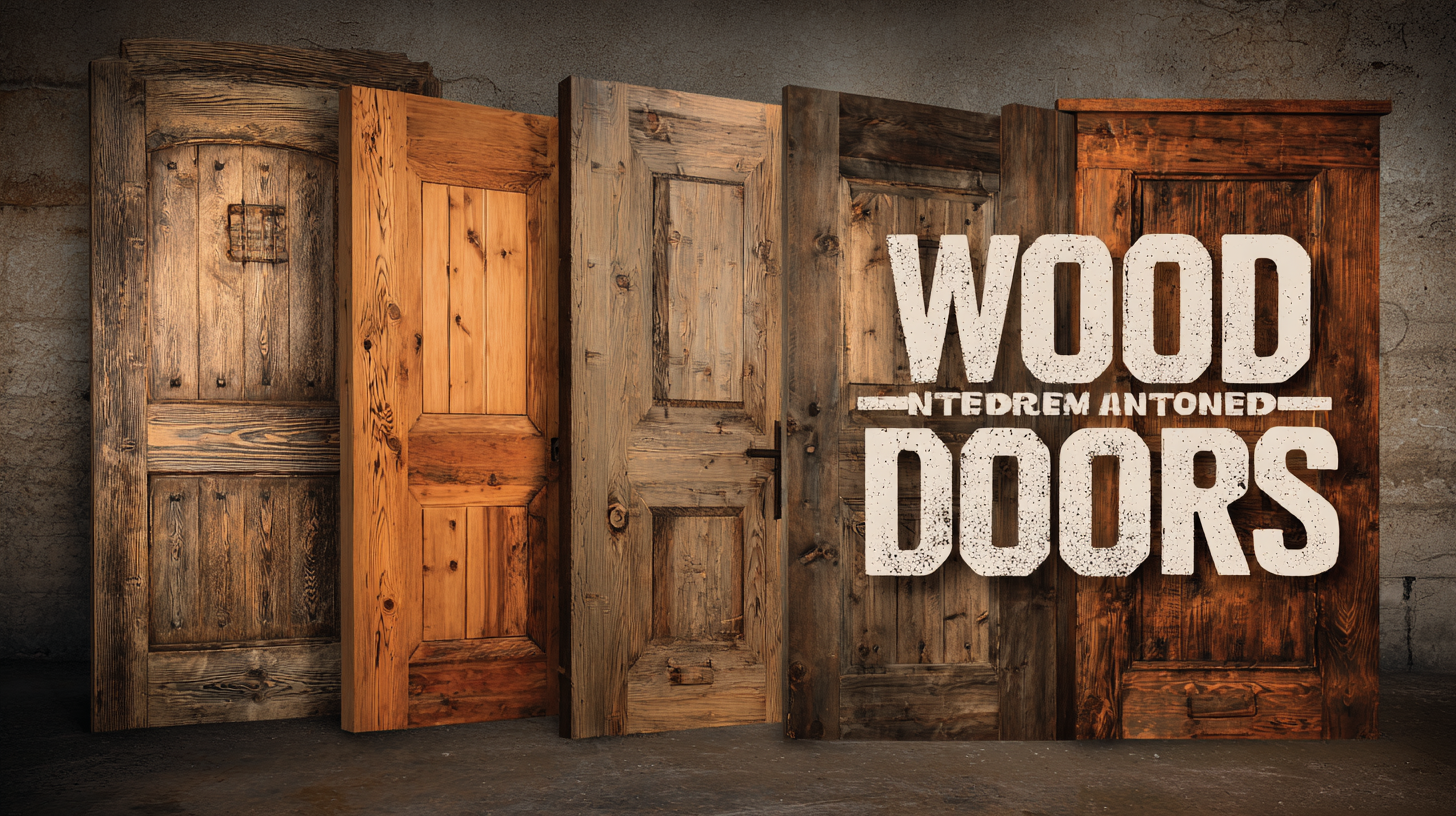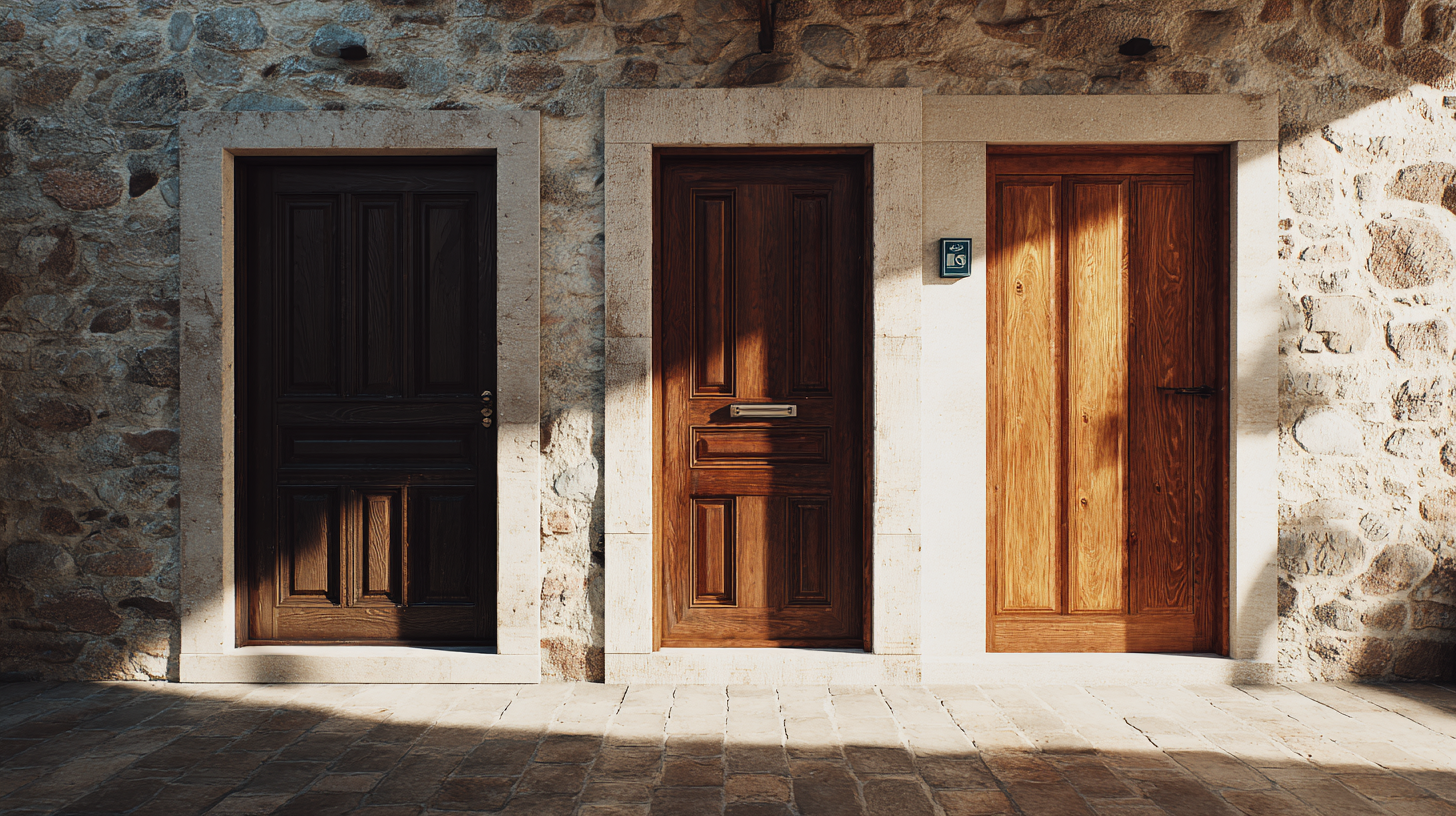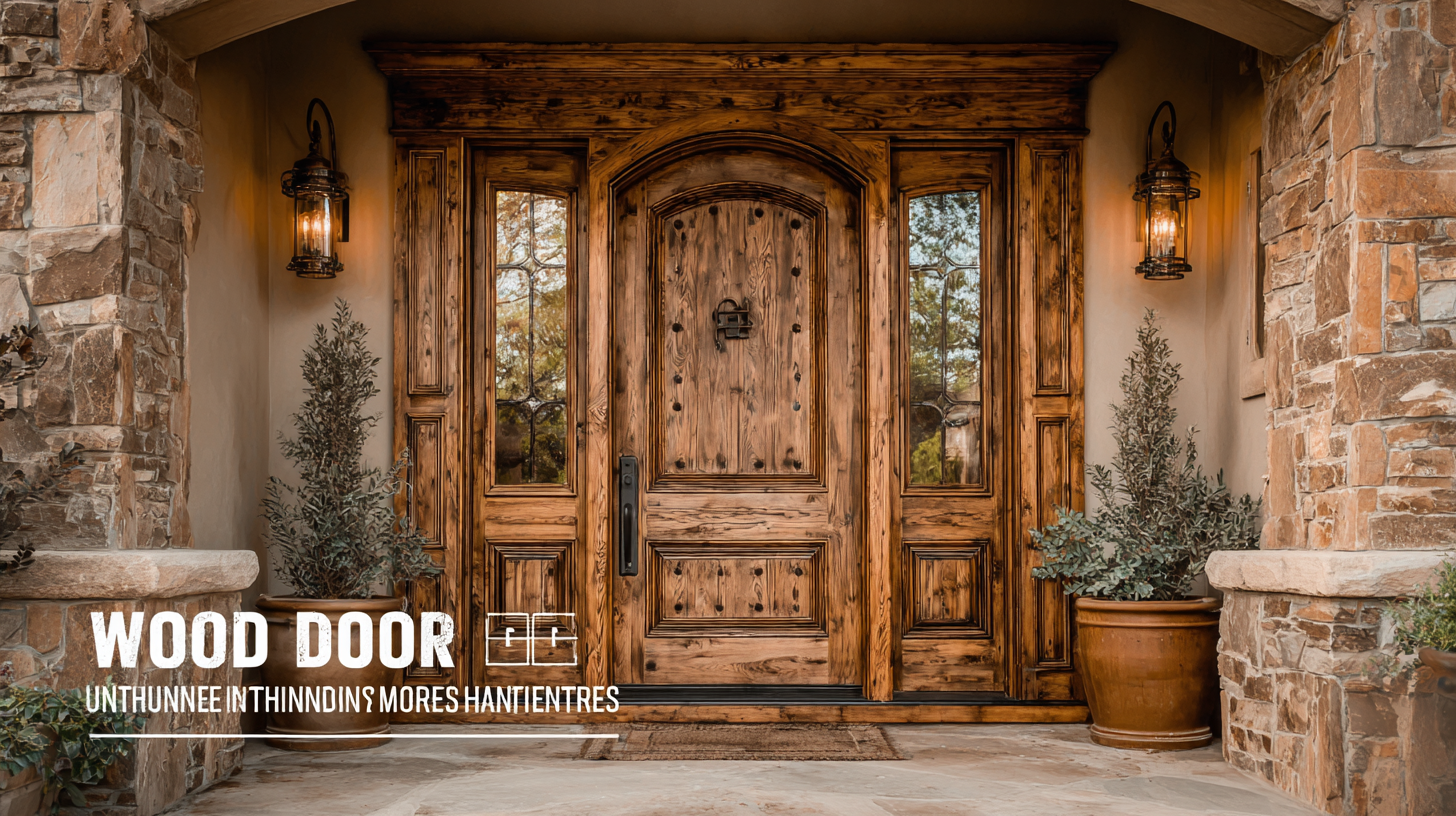
Understanding Industry Standards: How to Choose the Best Wood Entrance Doors for Global Markets
As the global demand for aesthetically pleasing and sustainable building materials continues to rise, Wood Entrance Doors have emerged as a significant player in the construction and design sectors. According to the latest report from Allied Market Research, the global wooden door market was valued at approximately $33 billion in 2020 and is projected to reach $54 billion by 2027, growing at a CAGR of 7.0%. This upward trajectory reflects not only the robust architectural trends but also a shift towards eco-friendly materials that meet stringent industry standards. Understanding these trends and the factors that influence consumers' choices is vital for manufacturers and retailers aiming to thrive in competitive global markets. This blog will delve into the 2025 technology trends shaping the wood entrance doors market and present top strategies for selecting high-quality products that cater to the evolving needs of consumers worldwide.

Evaluating Global Market Trends in Wood Entrance Door Manufacturing
The wood entrance door market is experiencing significant changes driven by global trends and consumer preferences. As environmental concerns rise, manufacturers are increasingly focusing on sustainability. This includes sourcing wood from responsibly managed forests and implementing eco-friendly production methods. Consumers are more informed today, and they often seek products that align with their values, favoring options that offer both aesthetic appeal and a minimal carbon footprint. This trend not only impacts local markets but also sets a standard for international manufacturers looking to export their products.
Additionally, emerging styles and designs are shaping the global wood entrance door landscape. As architectural trends evolve, there is a growing demand for custom and innovative door designs that cater to diverse tastes. Trends like minimalism and a return to natural materials are influencing consumers' choices, prompting manufacturers to adapt their offerings to meet these preferences. By staying attuned to these global market trends, businesses can better position themselves to cater to a wide range of consumers and capitalize on the lucrative opportunities within the wood entrance door industry.
Key Industry Standards for High-Quality Wood Entrance Doors
When selecting wood entrance doors for global markets, understanding industry standards is crucial for ensuring high quality and durability. According to the Wood Door Institute, doors that meet industry standards typically undergo rigorous testing, including standard assessments such as ASTM D7031 for performance and durability. These guidelines help manufacturers provide doors that can withstand various environmental stresses, including moisture, temperature fluctuations, and physical impacts.
Moreover, certifications like the American National Standards Institute (ANSI) and the Forest Stewardship Council (FSC) play a significant role in guiding consumers toward sustainable options. A report by the International Code Council indicates that doors certified by these organizations are not only environmentally friendly but also offer enhanced fire resistance and security features. In fact, studies show that using doors that adhere to these standards can reduce energy costs by up to 25% due to improved insulation. Thus, it is essential to look for these key industry standards when choosing the best wood entrance doors for diverse markets.
Sourcing Sustainable Materials: A Competitive Advantage in the Market
When sourcing wood entrance doors for global markets, choosing sustainable materials can provide a significant competitive advantage. Consumers today are increasingly conscious of their environmental impact, and using sustainably sourced wood not only appeals to this demographic but also enhances a brand's reputation. By prioritizing green materials, companies can differentiate themselves in a crowded marketplace and attract eco-friendly customers.
**Tips for Sourcing Sustainable Materials:**
1. **Look for Certifications:** Seek wood that is certified by organizations like the Forest Stewardship Council (FSC). This ensures that the timber is harvested responsibly and supports sustainable forest management practices.
2. **Consider Local Sourcing:** Whenever possible, source materials locally to reduce carbon footprints associated with transportation. Local suppliers are often more familiar with sustainable practices and can offer insights on the best options available.
3. **Evaluate Lifecycle Impact:** Consider the entire lifecycle of the materials, including production, shipping, and disposal. Opt for woods that are durable and have low environmental impact throughout their lifespan.
Incorporating these practices into your sourcing strategy can lead to more sustainable products that resonate well with increasingly eco-conscious consumers.

Understanding Regional Regulations Impacting Wood Door Exports
When it comes to exporting wood entrance doors, understanding regional regulations is crucial. Different countries have distinct standards concerning wood species, treatments, and emissions. For instance, the European Union has strict requirements on the types of wood that can be used, focusing on sustainability and preventing the use of endangered species. Additionally, regulations regarding moisture content and fire safety can vary greatly from one region to another, making it essential for manufacturers to stay updated on these standards.
Tip 1: Research the specific regulations of the target market thoroughly before initiating production. This not only ensures compliance but also saves time and resources in the long run.
Furthermore, certifications such as Forest Stewardship Council (FSC) or Sustainable Forestry Initiative (SFI) play a significant role in the acceptance of wood products in the global market. Many regions prefer or even mandate eco-friendly credentials, showcasing a commitment to sustainable practices. Understanding the importance of these certifications can help companies enhance their marketability.
Tip 2: Invest in obtaining relevant certifications as they not only align your product with industry standards but also appeal to environmentally-conscious consumers.
Why China’s Manufacturing Excellence is Essential for Global Partnerships
China has solidified its position as a leading manufacturer of wood entrance doors, thanks in part to its advanced production techniques and commitment to quality. According to a report by the China Timber and Wood Products Distribution Association, the country accounted for approximately 35% of the global market share in wooden doors in 2022, showcasing its dominance in this sector. The ability to produce high-quality, aesthetically appealing doors at competitive prices has attracted buyers from various international markets, making China an essential partner for brands seeking to enhance their product offerings.

The value of China's manufacturing excellence extends beyond sheer output; it reflects a dedication to sustainability and innovation. A recent study published by the Global Forest Resources Assessment indicates that China has made significant strides in eco-friendly production, with over 60% of its wood entrance doors now sourced from sustainable timber. This commitment not only helps in meeting international environmental standards but also aligns with the growing consumer demand for sustainable products. Therefore, companies looking to thrive in the competitive global marketplace must consider collaborating with Chinese manufacturers to leverage their expertise and commitment to quality and sustainability.











